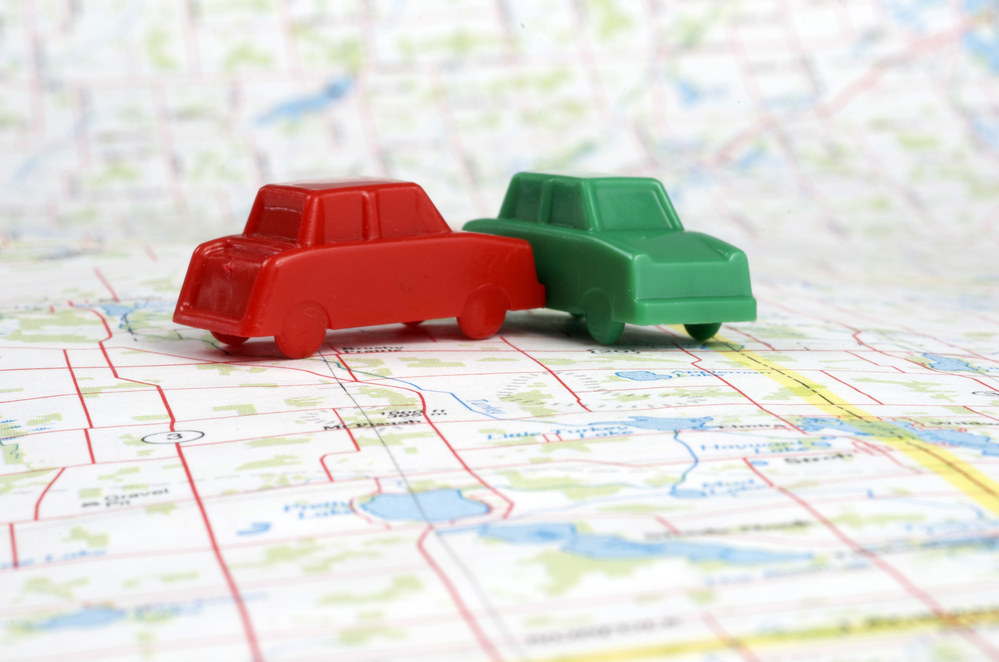Vehicular accidents can cause severe or fatal injuries, and T-bone accidents — also called side-impact and broadside collisions — can be especially deadly.
Unfortunately, these wrecks are also quite common. According to the National Highway Traffic Safety Administration, around 23.6% of all wrecks in the United States are T-bone accidents, and in 2020, these accidents caused 6,432 deaths and 467,073 injuries in the United States alone. If you’ve suffered from a T-bone collision, you may wonder who is at fault and how you can prove liability. Here’s what you need to know about T-bone collisions and proving fault.
What is a T-Bone Accident?
A T-bone accident refers to when the front end of a vehicle strikes another vehicle’s side, creating a “T” shape. These accidents are incredibly dangerous because vehicles’ sides are more vulnerable than other vehicle sections. Your car doesn’t have side protection that can absorb the impact of the collision, such as a bumper, meaning that the impact force is greater.
Additionally, when a driver strikes a car’s side, their vehicle can cause serious bodily damage to the other driver or a passenger depending on the car’s point of impact. Fortunately, newer vehicles often come with side-impact airbags that reduce the risk of serious injury or death, but these accidents can still cause fatal injuries even with this additional protection.
T-Bone Accident Injuries
T-bone accidents can cause a number of serious or fatal injuries. Some of these include:
- Broken bones: The impact of a striking vehicle can cause a driver or passenger to sustain serious fractures.
- Whiplash and other neck injuries: T-bone collisions can cause enough impact for a vehicle occupant’s head to jerk forward and back suddenly, potentially causing whiplash, nerve damage, or fractures in the vertebrae.
- Bruises: The force of impact can cause serious bruising.
- Cuts: Windows and windshields often shatter during T-bone wrecks, and the broken glass can cause serious lacerations.
- Burns: T-bone accidents can cause vehicles to catch fire.
- Back injuries: These accidents can cause a variety of serious back injuries, including spinal compression, broken vertebrae, and bulging or herniated discs. Those who suffer a serious injury to the spinal cord may suffer from temporary or permanent paralysis.
- Traumatic brain injuries (TBI): A T-bone accident victim may hit their head on a steering wheel, dashboard, or another part of their car. Additionally, the impact can cause a person’s head to shake suddenly, which can also cause a TBI.
If you’ve suffered from an injury from a T-bone accident, you may be able to recover compensation for medical bills, lost wages, pain and suffering, loss of future earnings, and more.
Determining Fault After a T-Bone Collision
When it comes to determining fault after a T-bone crash, road authorities and insurance companies will investigate who had the right of way. These collisions often happen due to an at-fault driver failing to yield to the driver who had the right of way. For example, if a car turns left out in front of you suddenly, causing a collision, they would likely be at fault even though you struck their vehicle.
Some of the most common contributing factors for T-bone accidents include:
- Running a red light or stop sign
- Speeding
- Driving aggressively
- Driving under the influence of drugs or alcohol
- Turning left in front of an approaching car
One important note when it comes to T-bone cases in Indiana is that we use a modified comparative negligence system. Sometimes, multiple drivers may be at fault for an accident, and these drivers will be assigned a percentage of the blame. For example, if a car turns left in front of you and you were speeding at the time, you might both be considered partially at fault. Perhaps they would receive 75% of the blame while you bear 25% because you were speeding. With a comparative negligence system, your percentage of blame directly impacts your ability to recover compensation. In this example, the amount you can receive in damages will be 25% less because that’s your percentage of liability.
With Indiana’s modified comparative negligence system, drivers can only recover compensation if they’re less than 51% responsible for the wreck. Going back to the previous example, the driver who was 75% responsible wouldn’t be able to recover compensation from you or your insurance company.
Proving Fault in a T-Bone Accident
If you plan on filing a claim or lawsuit against a driver or their insurance company, you’ll need to be able to prove that they were at fault and that you sustained damages as a direct result of their negligence. Damages can include property damage as well as any expenses related to personal injuries that you sustained in the wreck.
Some pieces of evidence that you can use to prove that the other driver was at fault include:
- The police’s accident report
- Photos and videos of the scene of the accident
- Surveillance footage that recorded the accident
- Eyewitnesses
- Accident reconstruction experts
If you seek compensation for personal injuries, you’ll need to draw a direct connection between the wreck and your injuries. For this reason, you should seek medical assistance as soon as possible after sustaining a T-bone injury. Evidence you can use to prove that you sustained damages includes:
- Proof of medical bills and expenses
- Testimony from a medical expert
- Proof that you took time away from work due to your injuries
Contact an Indiana T-Bone Accident Attorney
In the event that you’ve suffered from a T-bone collision or another traffic accident, you need to contact a car accident attorney. For legal support in Indiana T-bone accidents, contact the Flores Law Group. We’ll help you prove your claim or lawsuit, and we’ll work to get you the money you deserve for your wreck.
Visit our office today or call us at 317-900-2556. You can also get a free case consultation online.

